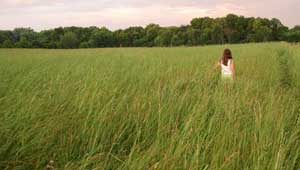The 410-mile Connecticut River is New England’s largest river, draining a 7.2 million-acre watershed that supports fisheries, farmlands, forests, and fresh water in four states: New Hampshire, Vermont, Massachusetts, and Connecticut. While 89 percent of the watershed is undeveloped, its lands and resources are under constant threat of development. Without strategic, community-initiated conservation, the resources that sustain community identity, ecological integrity, and the land’s economic viability will be lost.
To date, The Trust for Public Land has conserved more than 170,000 acres in the watershed. Our focus areas are:
- Farmland: lands with highly productive soils, capable of economically viable local food production.
- Fisheries: places capable of supporting native Eastern Brook Trout and other coldwater fish species. This strategy will help mitigate for habitat loss resulting from climate change.
- Community open spaces: lands communities identify as important that support multiple public benefits, including recreation, community forests, and fresh water.

